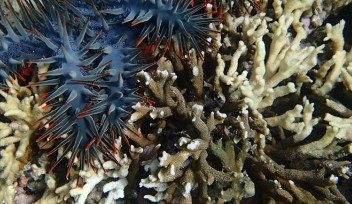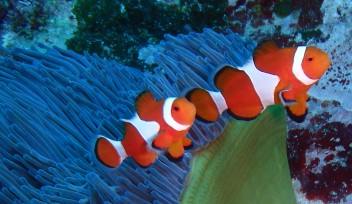Decoding the Complex Life of a Simple Parasite

Dicyemids, microscopic parasites comprised of 30 cells, are in-between creatures. With their basic three-part body plan, they are more complex than single-celled protozoans but considerably less complex than multicellular metazoans – the animals of the kingdom Animalia. Yet the simple makeup of these so-called mesozoans does not translate to a simple life.
For example, dicyemids eliminate genes to conserve energy and change how they sexually reproduce.
Growing up in the renal sac of an octopus doesn’t sound all that luxurious, but for a dicyemid, it’s an all-inclusive home. In the sac they can feed on urine and reproduce asexually and sexually. When population becomes too dense in the sac, dicyemids become sexual. The larvae produced sexually vary from the larvae produced by asexual reproduction - sexual larvae leave the host in search of a new octopus to call home, and once a new host is found, the cycle continues. However, scientists are still not sure why this simple organism has such a complex lifestyle.

Researchers at Okinawa Institute of Science and Technology Graduate University (OIST) and Osaka University have decoded the genome sequence of dicyemids, providing key insight into the parasites’ not-so-simple lifestyle. The study, published in Genome Biology and Evolution on July 26, 2019, will help shed light on some of these mysteries.
Prof. Nori Satoh of the OIST Marine Genomics Unit and former PhD student Dr. Tsai-Ming Lu collaborated with renowned dicyemid researcher, Dr. Hidetaka Furuya of Osaka University to sequence the parasite.
The research began in Osaka, where the scientists went to the local fish market and purchased live octopuses. The sourced cephalopods were then brought to the lab, where the scientists collected their urine using a pipette.
They then extracted dicyemids from the urine, carefully removing octopus cells to make sure the samples were pure.
“We rinsed the cells with saltwater and separated them out,” Lu said. “This was repeated several times to remove as many cells of the octopus as we could. Finally, we picked up dicyemid individuals one by one under the microscope to obtain the samples for sequencing.”
Even with this cleaning step, however, obtaining a pure sample of dicyemids was a challenge.
“It is really difficult to exclude all octopus cells from dicyemid samples; however, to obtain a pure sample from the octopus is much easier, so we extracted the genomic DNA,” Lu said.
This obstacle added two years of work to the study, but the researchers ultimately got a clear result: They sequenced the genomes of both organisms and – because the octopus genome has already been sequenced, they were able to extract it out to obtain the sequence of the parasite.
The team found that the dicyemid genome is highly reduced compared to other parasites. For example, these parasites have just four so-called Hox genes, which are responsible for building an organism’s body-plan. These genes are groups of related genes. The groups are usually organized, but that isn’t the case for dicyemids. Scientists found disorganized clusters of genes possibly due to how dicyemids can eliminate genes for energy conservation. They remove genes in their metabolic, immune, and nervous systems.
“Hox genes are important elements in building complicated animal bodies,” Furuya said. “If genomes of many parasites are sequenced, that accumulated genome information can possibly reveal parasites specific gene organization.”
Every animal on Earth has parasites, and while some are simple, others are not. The complete genome sequence of dicyemids not only answers some big questions in dicyemid biology but also offers insights into the evolution of parasites.
Research Unit
For press enquiries:
Press Inquiry Form














